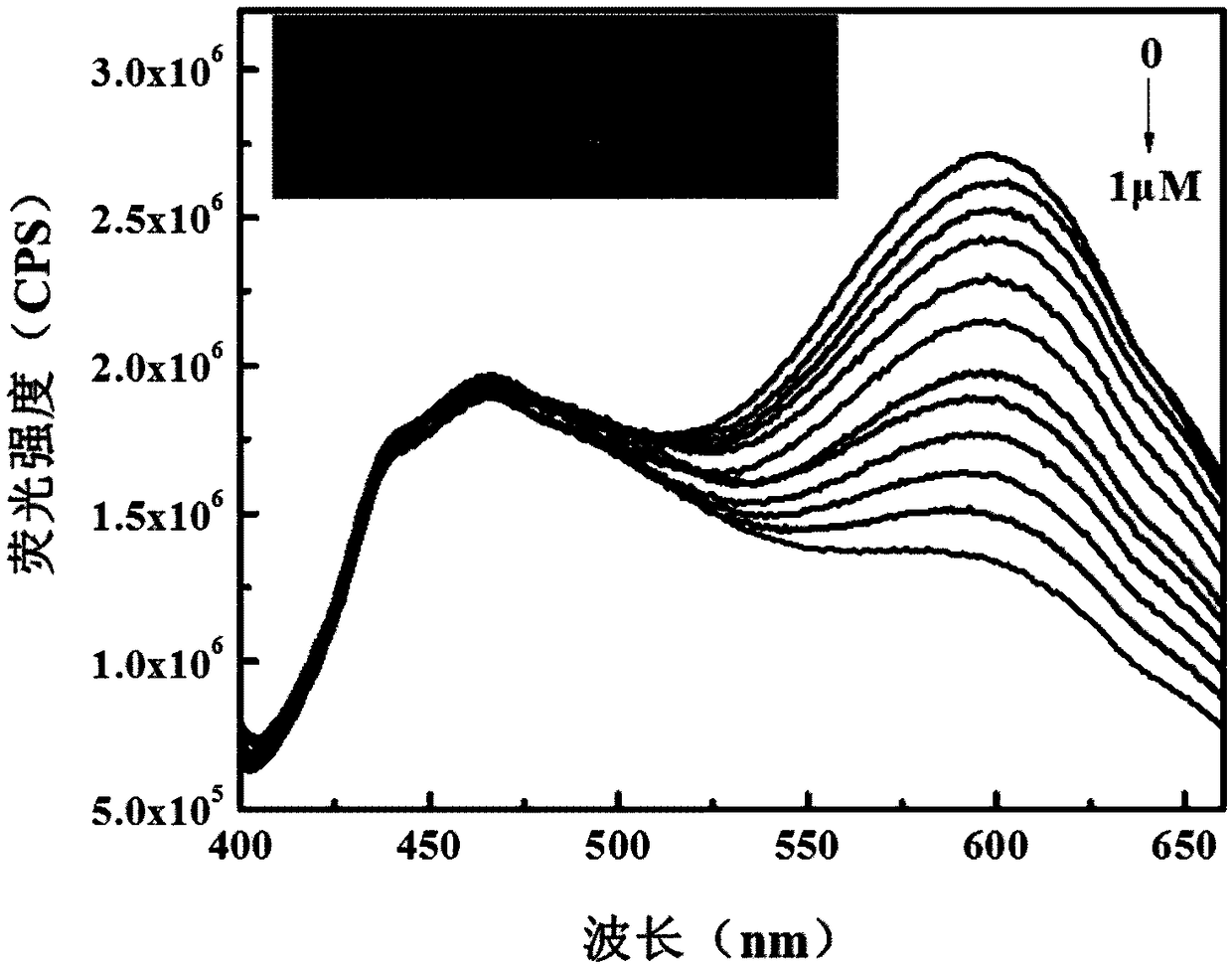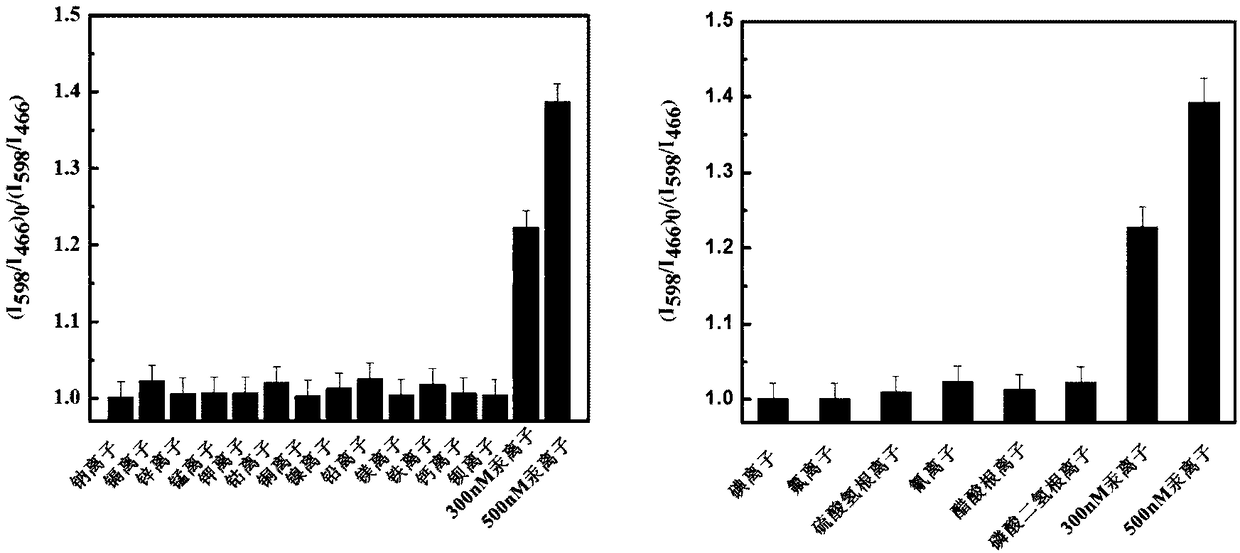Carbon-gold nanocluster ratio fluorescent sensor microsphere as well as construction and application thereof
A gold nanocluster, ratio fluorescence technology, applied in the fields of materials science and engineering and environmental analytical chemistry, can solve problems such as uncontrollable, unfavorable fluorescent material application, complex construction process, etc., to achieve easy operation, rich applications, and simplified experimental steps Effect
- Summary
- Abstract
- Description
- Claims
- Application Information
AI Technical Summary
Problems solved by technology
Method used
Image
Examples
Embodiment 1
[0031] For the process of ratiometric fluorescence sensor preparation, see figure 1 :
[0032] a. Preparation of carbon-gold nanoclusters: Weigh 46 mg of glutathione and add 2 mL of 50 mM chloroauric acid trihydrate solution, then add 48 mL of water, and reflux at 70° C. for 2 h to obtain a gold seed solution. Then weigh 10mg of glucose and dissolve in 5mL of the above-prepared gold seed solution, and then put it into a household microwave oven and microwave at medium heat (microwave power 700W, rated voltage 220V, rated frequency 50Hz) for 8min to prepare carbon-gold nanoclusters solution. Finally, it was dissolved in 5mL of water for use (see figure 2 A and Figure 6 ).
[0033] Depend on figure 2 A and Figure 6 It can be seen that the particle size of the obtained carbon-gold nanoclusters is between 2-5 nm, and the two emission peaks are at 466 nm and 598 nm, respectively.
[0034] b. Preparation of dithiothreitol-modified carbon-gold nanoclusters: Take 20 μL of D...
Embodiment 2
[0037] Take 10 μL of the carbon-gold nanoclusters and dithiothreitol-modified carbon-gold nanocluster solutions obtained in the above examples diluted 1000 times with ultrapure water, respectively, and disperse each dilution on the ethanol-washed copper On the net, after drying, the copper net loaded with the above-mentioned each diluted substance is observed with a transmission electron microscope (see figure 2 A-B); if figure 2 As shown in A, the particle size of carbon-gold nanoclusters is about 3nm, such as figure 2 As shown in B, the particle size of dithiothreitol-modified carbon-gold nanoclusters is also about 3nm, indicating that the modification of dithiothreitol will not cause the agglomeration or shape change of carbon-gold nanoclusters .
Embodiment 3
[0039] After the prepared dithiothreitol-modified carbon-gold nanocluster (DTT / C-AuNCs) solution was ultrasonically dispersed by an ultrasonic machine, three parallel copies were taken, and the same volume of 1mL DTT / C-AuNCs solution was added to a weighed In a heavy 1.5mL centrifuge tube, weigh again after drying. The concentration of the DTT / C-AuNCs solution was calculated as 0.50 mg / mL by calculating the ratio of the mass difference before and after the three parallel samples to the volume.
[0040] When measuring the fluorescence spectrum, take 0.2mL of the above-mentioned DTT / C-AuNCs solution with a concentration of 0.50mg / mL, and measure the total volume of the solution to be 0.5mL, that is, the concentration of DTT / C-AuNCs is 0.20mg / mL.
[0041] Prepare a series of PBS buffer solutions with pH values of 5.0, 5.5, 6.0, 6.5, 7.0, 7.5, 8.0, 8.5 and 9.0. The specific method is to prepare sodium dihydrogen phosphate and disodium hydrogen phosphate solutions with a concent...
PUM
| Property | Measurement | Unit |
|---|---|---|
| particle diameter | aaaaa | aaaaa |
Abstract
Description
Claims
Application Information
 Login to View More
Login to View More - R&D
- Intellectual Property
- Life Sciences
- Materials
- Tech Scout
- Unparalleled Data Quality
- Higher Quality Content
- 60% Fewer Hallucinations
Browse by: Latest US Patents, China's latest patents, Technical Efficacy Thesaurus, Application Domain, Technology Topic, Popular Technical Reports.
© 2025 PatSnap. All rights reserved.Legal|Privacy policy|Modern Slavery Act Transparency Statement|Sitemap|About US| Contact US: help@patsnap.com



